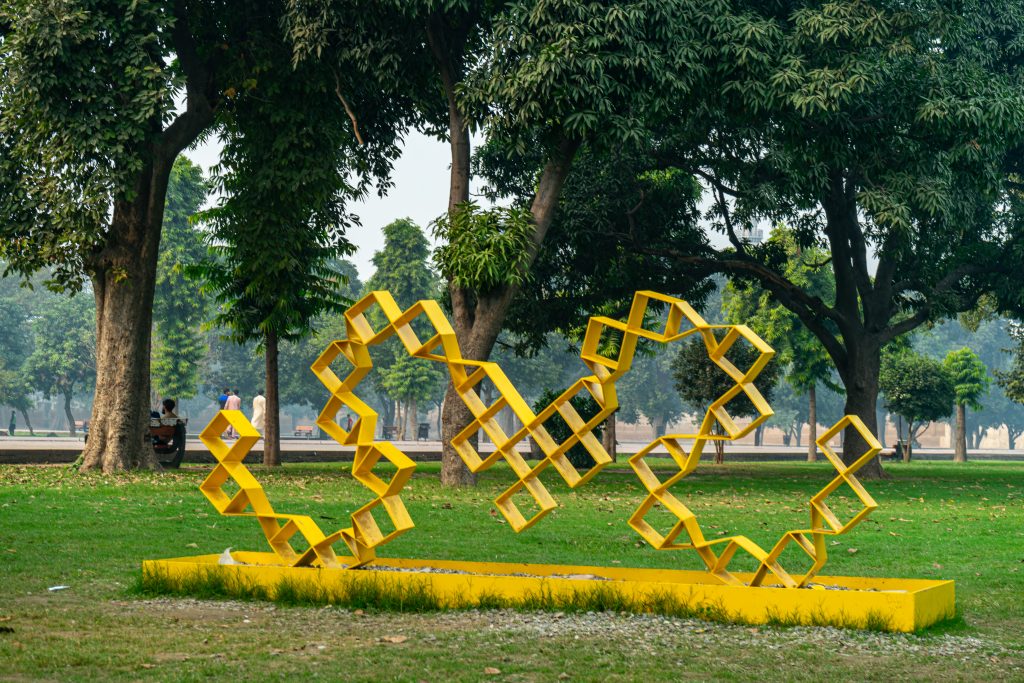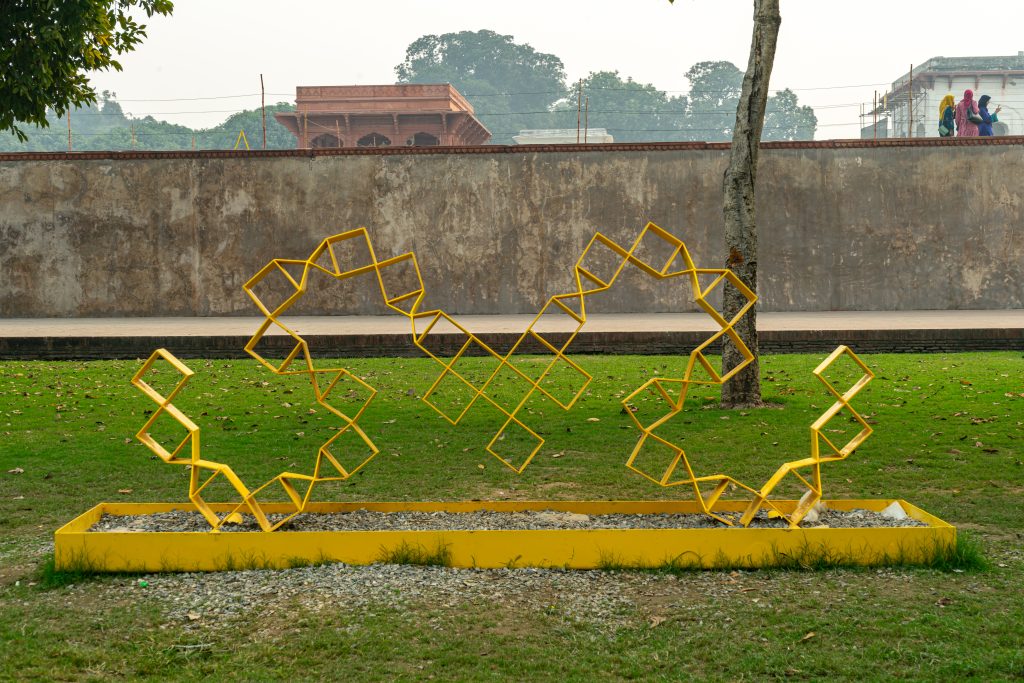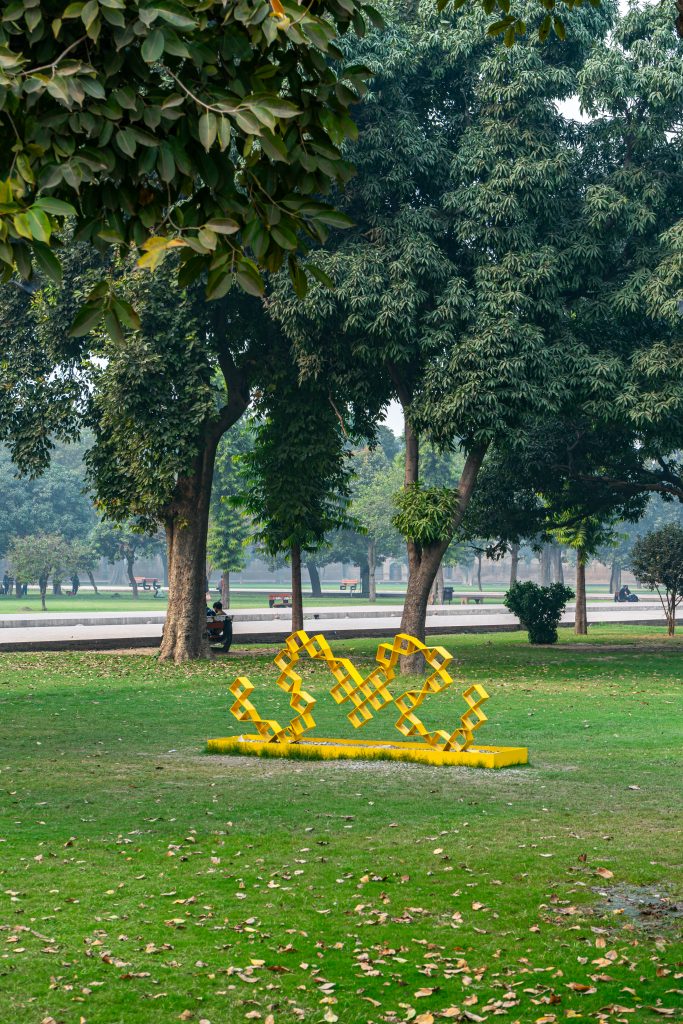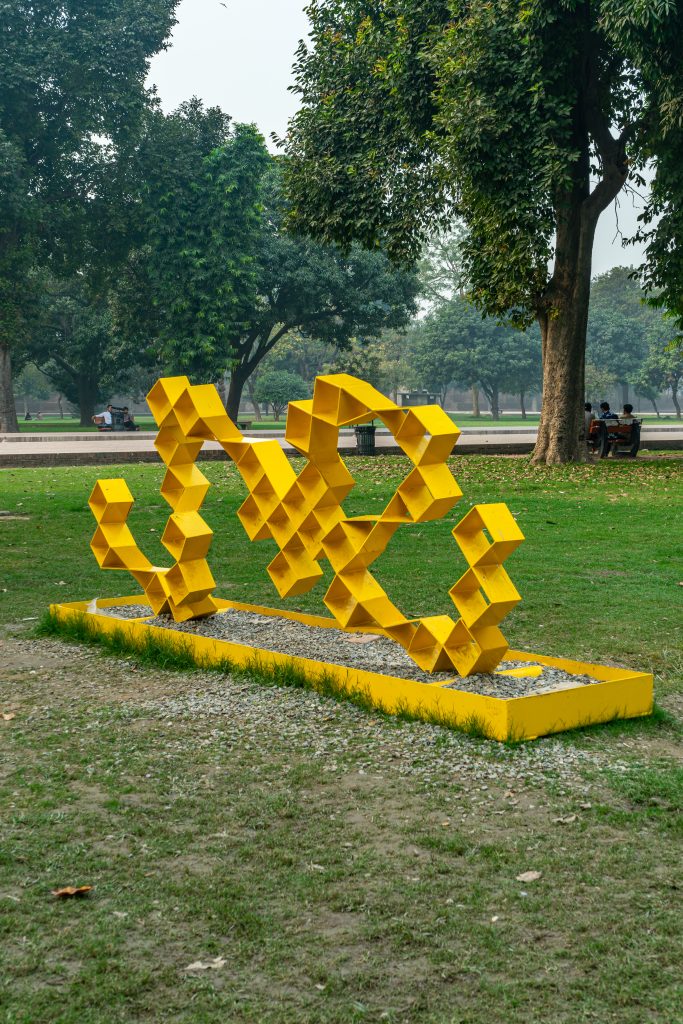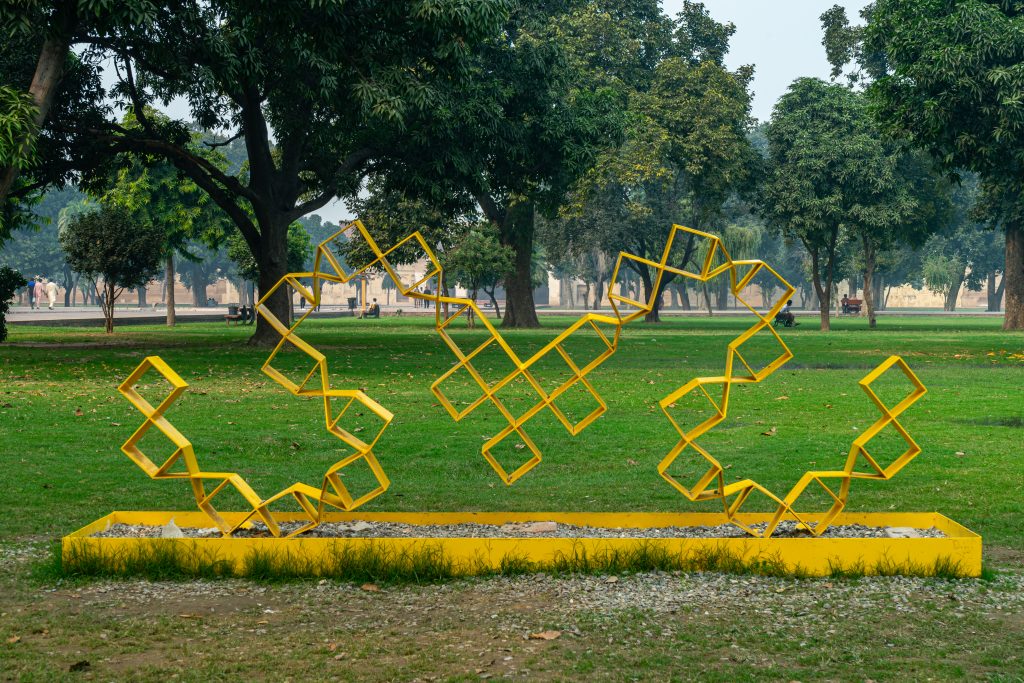Zahoor ul Akhlaq
Markhor, c. 1980
Zahoor ul Akhlaq
Akhlaq is best known for his paintings and works on paintings, which drew on modernism and Mughal miniature painting in equal measure, and which laid the ground for an influential trajectory of contemporary practice by subsequent artists. His melding of tradition and innovation can also be seen in his lesser-known sculptural public artworks, which cannily employ geometry as the vocabulary of both historical Islamic aesthetics and modern abstraction. His Markhor represents the country’s national animal as a design composed of diamond-shaped units, with the goat’s distinctive screw horns stylized as symmetrical arabesques. The piece testifies to Akhlaq’s abiding concern for the country’s distinctive built and natural environment.
Zahoor ul Akhlaq (1941-1999), a graduate of the National College of Arts (NCA) under the direction of the modernist NCA professor Shakir Ali, subsequently mentored many of the leading artists of today during his time as a professor at the National College of Arts. Akhlaq helped open the path for reconsidering traditional forms, such as miniature painting, as contemporary practice, paving the way for artists such as Shahzia Sikander, Imran Qureshi, and Rashid Rana.
Markhor, c. 1980
ظہور الاخلاق
ظہور الاخلاق آرٹ کی روایتی دستکاری کو فروغ دینے کے لئے جانے جاتے ہیں۔ انہوں نے اپنے تخلیق کئے کئی مجسموں میں جیومیٹری کا استعمال کیا۔ جیومیٹری کا یہ خاکہ اسلامی جمالیات اور جدید تجریدی آرٹ پر مشتمل ہے۔
ظہور الاخلاق کے تخلیق کئے گئے مجسموں میں شامل ایک ایسا مجسمہ ہے جو پاکستان کے قومی جانور “مارخور” کی عکاسی کرتا ہے۔ یہ فن پارہ ملک کی منفرد ساخت اور قدرتی ماحول کے لیے ظہور الاخلاق کی فکرمندی کی بہترین مثال ہے۔
ظہور اللخلاق (1941-1999) نیشنل کالج آف آرٹس کے فارغ التحصیل ہیں۔ انہوں نے پروفیسر شاکر علی سے تربیت لی۔ انہوں نے خود بھی بطور این سے اے پروفیسر بہت سے معروف فنکاروں کی رہنمائی کی۔ اخلاق نے روایتی فن کی بحالی میں مدد کی، جس کی بنا پر شاہزیہ سکندر، عمران قریشی، اور راشد رانا جیسے فنکار اپنے فن کو فروغ دے سکے۔
1980, مارکھور،
On loan from the collection of Imran Butt

